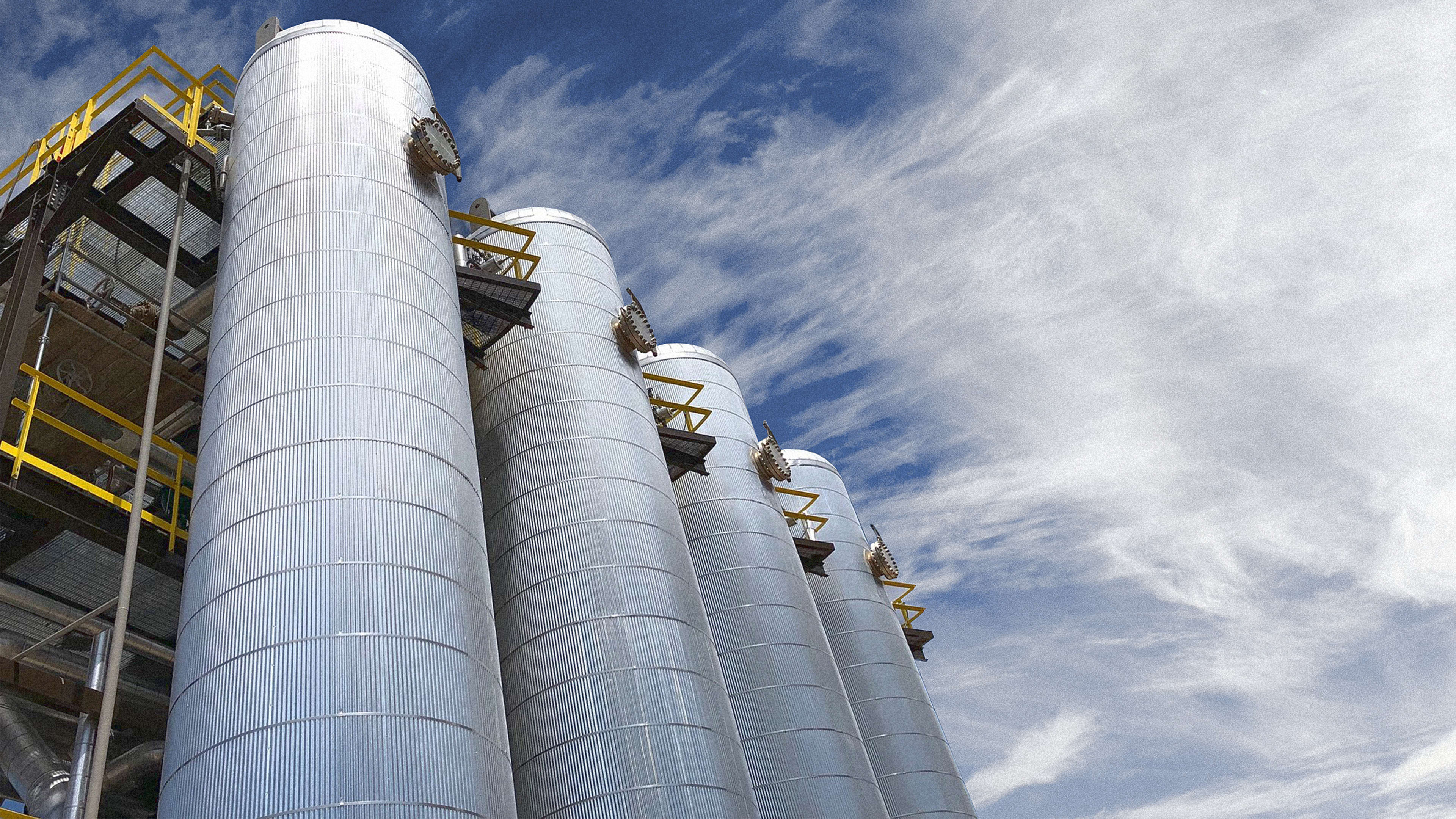Amazon says it wants to hit the goal of net-zero carbon emissions by 2040. Reaching that goal will require emissions cuts across the company’s operations, but one of the biggest challenges will be long-distance transportation—it’s possible to switch to electric delivery vans now for short trips, but cargo ships and large jets can’t yet feasibly run on electricity.
The company’s Climate Pledge Fund—which will put $2 billion in climate technologies that could help the company meet its emissions goals—is now one of the investors in a startup taking a different approach to reduce emissions. The startup, called Infinium, uses renewable electricity to break down water molecules to make green hydrogen. Then it adds the hydrogen to waste CO2 inside a custom reactor that makes synthetic gas. That gas can be converted into an “electrofuel” that can be used in existing trucks, planes, or ships.
The technology allows for “immediate decarbonization of transportation using today’s vehicles and today’s infrastructure,” says Infinium CEO Robert Schuetzle, who also founded Greyrock Energy, a company that created some of the technology that the startup is now using. “These are drop-in fuels that are similar or the same as are used in transportation today, except instead of using oil as a feedstock, we use anthropogenic CO2 and renewable power as our only input,” he says.
An airplane flying with the fuel will still emit CO2, but because the fuel was made with captured CO2, the process is net-zero, meaning it doesn’t add new gases to the atmosphere. To begin with, Infinium is buying waste CO2 from facilities like ethanol production plants. But it eventually hopes to work with direct air capture plants that can pull CO2 from the atmosphere. “When direct air capture is commercialized and it hits the cost targets for CO2 into our plant, we see that as a fantastic feedstock source, which really allows us to be anywhere on the globe and not co-located next to some of these CO2 sources that we’re working with today,” Schuetzle says.
The cost of the fuel is a challenge; right now, it’s around twice as expensive as regular fuel. But the company plans for costs to decline as renewable energy prices fall and other parts of the process become more affordable. Policy can help, such as California’s Low Carbon Fuel Standard, which gives financial incentives for fuel with a lower carbon footprint.
The company is working on early pilots now and expects to have its first commercial volumes of fuel on the market within several years. By the time that some large companies are aiming for net-zero emissions—like Ikea, which is aiming to be “climate positive” by 2030—the fuel should be widely available.
Recognize your brand’s excellence by applying to this year’s Brands That Matter Awards before the early-rate deadline, May 3.
